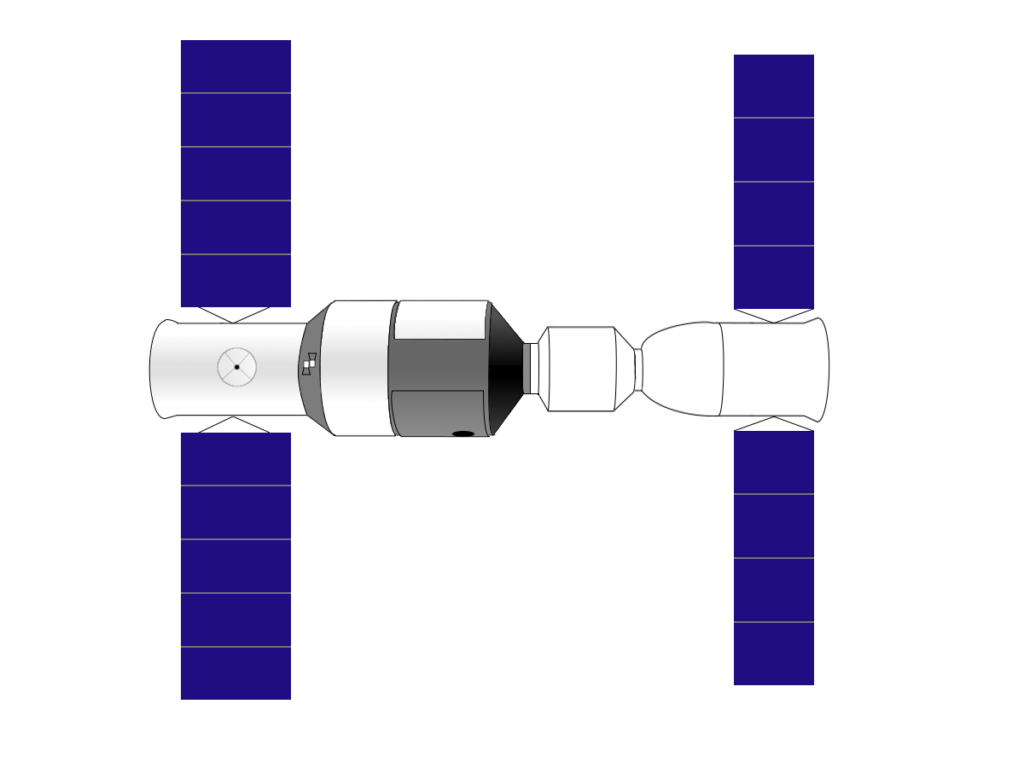
We’ve covered several other Shenzhou missions, and This Week in Rocket History is Shenzhou-9, the first crewed space station docking of the Chinese program.
China’s space program works in much the same way the early Soviet program did: a mix of uncrewed test flights to prove new capabilities with lower risk, followed by crewed flights. For example, Shenzhou-1 through 4 were uncrewed missions demonstrating different aspects of the Shenzhou spacecraft and launch vehicle before it was trusted with a crew on Shenzhou-5. Then Shenzhou-6 had two crew members before Shenzhou-7 finally had the full design complement of three crew members.
Their space station program has followed this model, too.
Tiangong-1 was China’s first space station. As stations go, it was pretty small, and it was launched by the same rocket that would be used for the crewed Shenzhou spacecraft which would visit it. Launched in 2011, it was first visited by the uncrewed Shenzhou-8 spacecraft to demonstrate the docking port before the crewed Shenzhou-9 spacecraft launched.
Shenzhou-8 was a milestone in and of itself, making China only the third space agency to demonstrate completely autonomous rendezvous and docking, behind the Soviet Union and the European Space Agency. The spacecraft performed two dockings during the mission. The first was during the orbital night because of concerns of glare from the sun confusing the docking sensors. The second docking, a few days after the first, was done in sunlight to prove the sensors would work in the more challenging conditions. Shenzhou-8 returned to Earth successfully at the end of the flight carrying a small biological payload in the return module.

Shenzhou-9 launched on June 16, 2012. This was 49 years to the day of the launch of Vostok-6 with the first woman in space, Valentina Tereshkova, and was chosen because of the crew of Shenzhou-9, which included the first Chinese woman astronaut, Liu Yang, and the first Chinese astronaut to go into space more than once, Jing Haiping. It automatically docked to Tiangong-1, two days after launch on June 18.
Three hours after docking, the pressure between the spacecraft was finally equalized and it was safe to board. The crew opened the hatch to Tiangong-1, and over the next six days conducted many scientific experiments.
On the sixth day of the mission, Shenzhou-9 undocked, and after an hour of free flight, Liu Yang guided it back to Tiangong-1 for manual docking, which was successful. This was an essential demonstration for the space station program. It’s not good to rely on an automatic system in case it has any problems.

Shenzhou-9 remained docked for another six days while the crew continued scientific research. One of the experiments was to determine if medicine had different potency in space compared to on the ground. In space, the dosage might need to be changed to have the same effect. In the test on Shenzhou-9, they used the common painkiller paracetamol, also known as acetaminophen. Acetaminophen was chosen because it’s easy to detect in saliva, according to the Astronaut Center of China. The astronauts took the medicine in flight as normal and were examined afterward on the ground. I was unable to locate the post-flight results of this experiment, but as two of the three astronauts conducted subsequent missions into space, it’s likely they were not harmed.
Shenzhou-9 undocked on June 28, 2012, and reentered on the same day. Before they reentered, the crew performed another manual rendezvous, back to 140 meters, before departing for good.
More Information
Insider: Tiangong 1 to launch in early Sept. (People’s Daily Online)
China successfully completes space docking (China Daily Europe)
Chinese spacecraft Shenzhou 9 makes first manual docking with space module (The Guardian)
Shenzhou 9 info page (Astronautix)




 Join the Crew!
Join the Crew!
 Escape Velocity Space News
Escape Velocity Space News
0 Comments